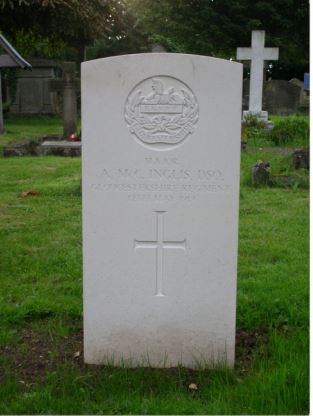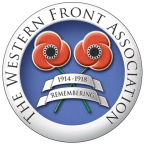Gloucestershire Regiment

Arthur McCulloch Inglis was born 14 July 1884 at the Caledonian Hotel, Inverness, Scotland. He was the second son of Lionel Arthur Lister Inglis, born in Bengal in 1845, and Agnes Kate Inglis (née Murrell), born Ross-on-Wye, Herefordshire, and was therefore Anglo-Indian. His sibling Lionel was born in 1882 in Cheltenham, and his paternal Grandfather was Henry Inglis of Hazaribagh, Chota Nagpur, India.
Arthur was a day boy at Cheltenham College from January 1900 to July 1901, when his family lived at Inglesby, New Barn Lane, Prestbury, Cheltenham. Before coming to Cheltenham, Arthur was educated by a Mr Foster in Fareham, Hampshire.
At the age of 17, Arthur obtained a commission in the 3rd (Militia) Battalion Wiltshire Regiment. He was granted a commission in the 2nd Battalion Gloucestershire Regiment in 1906, and promoted Lieutenant in 1908. He took part in operations in the Cameroons (1914-1916), in The Gambia Company, which formed part of the West African Field Force, and was made Captain in 1914. He later became a Major attached to the Machine Gun Corps (MGC), and was mentioned twice in despatches.
In September 1916 he became the first man to lead tanks into battle, and his heroic efforts during the Battle of the Somme earned him the Distinguished Service Order (DSO). His Mark I lead tank, C5, nicknamed Crème de Menthe, led the 2nd Canadian Division toward the German held sugar factory on the Somme near Longueval, between Guillemont and the Albert-Bapaume
road. He and Acting Corporal George Shepherd were command drivers. The Mark I was armed with six pounder guns and four machine guns. Despite being raked with German bullets, and losing a wheel from its steering mechanism at the Battle of Flers-Courcelette, which lasted one week, Crème de Menthe destroyed the German garrison at Flers, and its associated machine gun nests, on 15 September 1916. Major Inglis even managed to capture “a thoroughly disorientated German General” and bring him back to the British lines, for which he was later awarded the DSO.
Arthur died of illness, contracted in war service, in a nursing home in Cheltenham on 12 May 1919, aged 34. He is buried in the family grave in the south east area of St Mary’s Churchyard, Prestbury, Cheltenham. He is commemorated on the Cheltenham War Memorial, the Prestbury (St Mary’s Church) War Memorial and the Cheltenham College Roll of Honour.
In October 2004, the CWGC agreed to liaise with the Prestbury Parochial Church Council (PCC) and seek their permission to erect an official headstone on his grave in due course. The PCC provided final approval for the headstone on 3 May 2007, and the memorial was installed in July 2009.
His DSO was auctioned at Spink in London in July 2007 and raised £11,600.

